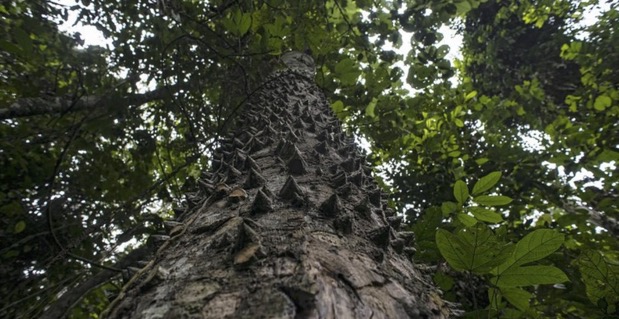I’ve been contemplating over the past few weeks if I dare add to the opinion pieces circulating around the recent Guardian articles. In its January 2023 piece, the Guardian claimed that an analysis they conducted found that at least 90% of Verra’s rainforest carbon credits do not represent real emission reductions and that big name corporates that purchased these offsets, have purchased “phantom credits”. In a follow on article in March 2023, the Guardian claims to have spurred Verra to replace its rainforest offsets scheme, which the Guardian investigation found flawed.
Rather than put my opinion hat on (and believe me, I have one) – I thought it would be more useful to be tactical. In this latest article, I highlight some ways that REDD+ investors can reduce risk, and contribute to improving the standard.
My primary hope is that investors don’t blacklist REDD+ strategies, but instead – get informed and be active investors to ensure this important nature-based solution strategy is well implemented. Take a step back, or a 30,000-foot view if you will and remember that REDD+ is essentially the only large-scale market-based mechanism to conservation in the tropics currently. It’s better that it is imperfect on the road to improvement than completely written off.

What Drives a REDD+ Investment Strategy
An investor in REDD+ forest conservation strategies currently has one or two main economic return drivers for investing into the strategy (putting aside co-benefit opportunities for the moment). These include:
- Revenues from carbon credit sales or secondary business (ie. eco-tourism), and/or,
- Access to carbon credits or claims for offsetting their own emissions.
The allure of investing into REDD+ projects is significant, with nearly immediate carbon credit generation (compared to ARR approaches, which take several years to sequester carbon and generate credits), the weighty co-benefits of protecting threatened intact forest landscapes, and the reputational bonus of being able to claim their part in these poster-child conservation efforts.
However, if the market for REDD+ credits crashes, revenue-driven investors are left without cash-flow (unless the investment is sufficiently exposed to profitable secondary business).
Similarly, if the REDD+ strategy for generating carbon credits is deemed flawed, the carbon balance sheets of credit/claim driven investors can go into the red.
As an investor – how do you then cushion yourself from a REDD+ market failure?
Safeguards for Investors in REDD+
What should the investor with REDD+ exposure, or one currently building an investment strategy that includes REDD+ do to protect themself from either market failure or credit delivery not meeting initial expectations? The following safeguards will assist you in not only reducing risk for participation in REDD+ but support the evolution of this nature-based solution so that it remains a credible and attractive approach to finance conservation objectives.
- Educate Yourself
As with any new investment strategy, embarking on a REDD+ strategy requires you to get educated on the characteristics of the asset – understanding what drives the value in the investment (uniqueness and high conservation value status of the forest/ecosystem to be protected, the ecosystem services it provides, the biodiversity characteristics). Understanding the risks behind the investment (market risks – such as we’ve been discussing, methodological risks – like those behind the Guardian accusations, political risks – sovereign carbon rights, socioeconomic risks – the main underlying threats of deforestation and forest degradation, environmental risks – such as fire). Identifying co-benefit creation opportunities that will support its long-term resilience, such as alternative livelihoods and food/fiber supply are all important in understanding what makes for a high value, high integrity credit.
- Perform your Due Diligence
REDD+ project portfolios are often bundled by aggregators. This is an extremely efficient characteristic of the space, given the complexity of such projects. It enables investors to put their trust in the experts and diversify across different projects easily. However, your due diligence should look both into the aggregator or project developer, and into the projects themselves.
When evaluating a developer, look for their track record with REDD+ (both implementation and credit issuance / sales as relevant). You will also want to understand how they participate in, or contribute to the improvement of REDD+ monitoring methodologies. Advocacy for REDD+ and its credibility as an additional and permanent nature-based solution are signs of a developer interested in the long-game of REDD+.
When evaluating projects, the bare minimum is reviewing the certification standard’s requirements (such as additionality, permanence, leakage, forest condition, governance). However, in light of recent methodological criticism – it is advised to go deeper on a project’s grounds for generating credits. Scrutinize a project’s baseline and how it was determined, as well as the without project scenario. If the project relies on out-dated monitoring techniques, consider investing in advanced measurement technology or having a third party make independent carbon calculations. As an extra risk measure, consider a more conservative risk buffer than is currently proposed by the developer.
- Diversify
As with most investment strategies, diversification is paramount for risk reduction. If REDD+ is the approach taken by the investor either to access carbon markets, or to offset emissions, consider the following diversification strategies: Diversify across project developers, methodologies (ARR, IFM, REDD+, etc.), geographies and landscapes, and revenue streams (carbon credits, timber, other land-based commodities).
- Be an Active Investor
In forest investment, it is common for particularly minority investors to perform an extensive due diligence at the outset, but then become silent owners throughout the holding period of the investment. This is more often the case when the investor has a limited understanding of the asset class. Here, I would urge the investor to go back up to Safeguard 1, educate yourself – and stay current on developing requirements of carbon standards. This is a quickly evolving space – and learning about REDD+ methodologies once in the due diligence phase and then forgetting about it is not doing you any favors. Further, in addition to keeping up to speed on REDD+ requirements, continue to visit the projects (and project developers) you invest in. Support the developer with trials and uptake of new monitoring technologies and have them be active in performance evaluation.
- Be a proponent for REDD+
Though the criticism REDD+ has received recently in many ways is inaccurate, it is an important part of improvement. My fear in attacks like this is that the perfect becomes the enemy of the good. Instead, it should be seen as an opportunity to upgrade outdated standards. As a REDD+ investor and proponent, it is your responsibility to engage in the discussion credibly. Take the high road, don’t tempt yourself with reverse-slander (which I’ve seen a lot of in the opinion pieces following these articles). Engage in discussion both with other proponents of REDD+, as well as with critics to collaboratively work towards more robust standards.
REDD+ as part of your Forest Investment Strategy in the Tropics
REDD+ is one of several approaches for investors looking for exposure to carbon credit markets and to offset their own emissions. However, it is unique in its ability to value vulnerable and intact tropical forests. If you are looking for ways to blend REDD+ into your forest investment strategy in the tropics, please reach out, as there are several ways to do this, but it will ultimately depend on your unique investment objectives.





